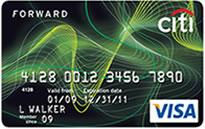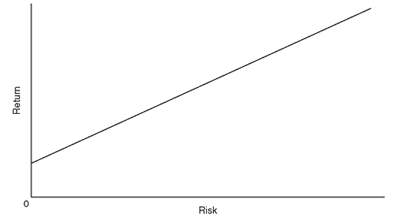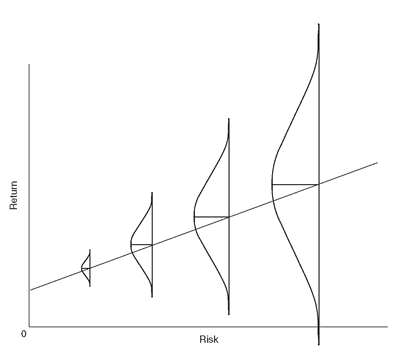 Costco just announced that they are raising their annual membership fee 10% in the US and Canada as of November 1st, 2011. This makes the Gold Star and Business memberships $55 and the Executive membership $110 per year. The maximum 2% cashback reward that comes with Executive Membership will increase from $500 to $750. The last price hike was in 2006, so the membership fee has actually been rising less than inflation. See Costco press release, WSJ article.
Costco just announced that they are raising their annual membership fee 10% in the US and Canada as of November 1st, 2011. This makes the Gold Star and Business memberships $55 and the Executive membership $110 per year. The maximum 2% cashback reward that comes with Executive Membership will increase from $500 to $750. The last price hike was in 2006, so the membership fee has actually been rising less than inflation. See Costco press release, WSJ article.
Is Costco worth it? As someone who shops at Costco regularly, I’ve asked Is the Executive Membership upgrade worth it? (You can’t lose money by trying it out.) This time, I thought it would be interesting to look at how the Costco business model itself affects the value to customers. There are various articles about the Costco business strategy, for example here, here, and here. This is a quick and dirty summary:
- Costco tries to make a low but constant profit margin, combined with large volume. Two metrics for this are operating margin, and sales per square feet. Costco keeps around a 3% operating margin, which means for every dollar in sales they get 3 cents of profit before things like interest and taxes. They don’t want this number higher (more room for competitors), or lower (race to zero). Costco has more sales per square feet than Wal-mart, Home Depot, or Nordstroms. They keep this high with low prices, bulk packaging, and limiting selection.
- Instead, most of the profit can be seen as coming from membership fees. Roughly half of the 22 million members in US and Canada are Gold Star/Business members paying $50 a year, and the other half are Executive members paying a $100 a year but with a 2% cash back check. Simple math says that Executive members should be spending $2,500 a year at Costco for this to be a good idea ($2,500 x 2% = $50). Spend $5,000 a year, and your membership is “free”.
- They treat their employees better with higher pay and benefits than say Wal-mart or Sam’s Club, as well having better stats for upward mobility. One number given was Costco pays 40% higher than Sam’s Club. I think this makes for a more stable operation and less employee turnover.
- They treat their customers better with a generous lifetime return policy. They’ve had to tighten it up with customers abusing the policy by returning TVs every year before the Super Bowl and buying a new one (now limited to 90 days on electronics), but it’s still very customer-friendly. I’ve seen people return empty wine bottles.
What’s the result? I like to look at it this way – at the two extremes:
- If you buy nothing and they can’t make any profit on markups, they’ll still charge you the $50 membership fee.
- If you buy $5,000 of stuff and get the 2% cashback, your membership fee is basically free ($100 minus $100). If you remove membership fees, you’ll find their retail profit margin is actually a thin 1%. I visualize this as the 3% overall margin minus 2% cashback. That leaves them with 1% of $5,000 = $50 again. Coincidence?
In the end, Costco makes money even with such low profit margins, as long as they keep you as a happy customer. Over 90% of people renew membership every year. This leaves Costco only concerned about expansion of members. In fact, they have a rule that they never charge more than 15% of the cost of any product. That’s tiny in the retail world. Remember, they still need to pay for the building, worker wages, and so on. As a result, Costco prices will always be “very good”, but it can be beat by short-term sale prices of an aggressive competitor or “extreme couponing” at grocery stores.
For some perspective, Wal-mart’s operating margin is around 6%, and Target’s is almost 8%. Since the basic membership fee is $55 a year soon, your only hurdle is to buy enough stuff to make the $55 worth it. Assuming based on the operating margins that Costco prices are 3% cheaper than Wal-mart, you’d have to spend $1,833 a year (about $150 a month) at Costco instead of Wal-mart to pay for the $55 membership fee.
Based on these assumptions, if you are someone who is satisfied with all-around competitive prices and doesn’t want to hunt for the best deal all the time, and would be spending more than $150 a month at Costco, then the new membership fee should be still worth it. Our family got $88 cash back last year.
If you do go for it, you can get 3% cash back on gas, 2% cashback on restaurants, 2% back on travel, and 1% back on everything else with the TrueEarnings Card from Costco and American Express, which also replaces your Costco membership card.

 This is actually a great fit for me, as the primary way I earn ThankYou points these days is with the Citi Forward® Card, which earns 5 points for every $1 you spend on restaurants, book stores including Amazon.com, video rental stores, and movie theaters. I have
This is actually a great fit for me, as the primary way I earn ThankYou points these days is with the Citi Forward® Card, which earns 5 points for every $1 you spend on restaurants, book stores including Amazon.com, video rental stores, and movie theaters. I have 


 Last week, Vanguard officially
Last week, Vanguard officially  The Best Credit Card Bonus Offers – May 2024
The Best Credit Card Bonus Offers – May 2024 Big List of Free Stocks from Brokerage Apps
Big List of Free Stocks from Brokerage Apps Best Interest Rates on Cash - May 2024
Best Interest Rates on Cash - May 2024 Free Credit Scores x 3 + Free Credit Monitoring
Free Credit Scores x 3 + Free Credit Monitoring Best No Fee 0% APR Balance Transfer Offers
Best No Fee 0% APR Balance Transfer Offers Little-Known Cellular Data Plans That Can Save Big Money
Little-Known Cellular Data Plans That Can Save Big Money How To Haggle Your Cable or Direct TV Bill
How To Haggle Your Cable or Direct TV Bill Big List of Free Consumer Data Reports (Credit, Rent, Work)
Big List of Free Consumer Data Reports (Credit, Rent, Work)